With the death of FDR’s father James in 1900, Sara Delano Roosevelt took control of the estate until her death in September 1941. Since Sara held final control of all decisions at Springwood, FDR purchased his own plot of land in 1911 to manage the way that he wanted. This purchase was the 194-acre Bennett farm, which is at present part of the Val-Kill property - in 1924 he leased a small section to Eleanor, Nancy Cook, and Marion Dickerman. This land was where Stone Cottage and Val-Kill Cottage were built. FDR also leased a portion of the farm to Moses Smith in1920. Moses became FDR’s’ first tenant farmer and an important connection to Hyde Park for FDR. Moses Smith rental farm was called Woodlawns, across Route 9G from the entrance to Val-Kill. On the rest of the property, FDR started conducting his forestry experiments. In 1924 the purchase of the Tompkins farm further expanded the estate as did the Rohan farm in 1937. The Rohan farm was last piece of property FDR purchased and was where FDR built his Top Cottage retreat. All in all, the Roosevelt Estate eventually grew to nearly 1,600 acres, of which 800 acres were native woods, 400 acres were orchards, pastures, tilled fields, and abandoned homes, and the remaining 400 acres were FDR’s tree plantations.
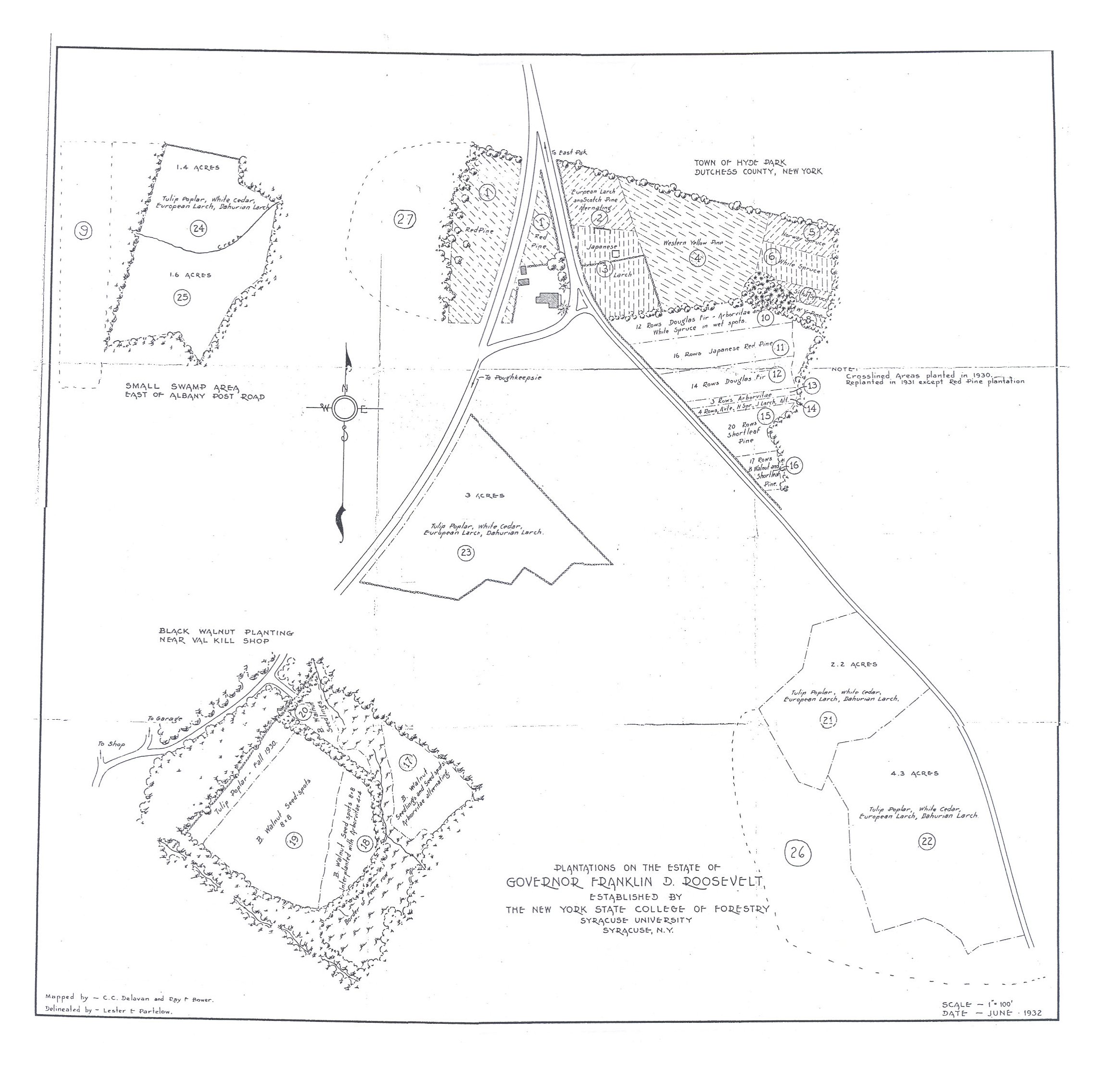
Map of combined land parcels on the Roosvelt property
FDR thought of the land as a resource, something to be used and managed in aresponsible manner. He treated the trees on his wood lots as a crop, not as a landscape. He was concerned about the productivity of the land and how to keep it that way, to make it sustainable.
In 1912, he became Chairman of the Forestry Committee of the New York Senate. He also purchased his first seedlings and began his venture. These would be the first of the nearly half a million trees that would be planted in the following 34 years. By the 1930s 20,000 – 55,000 trees were being planted on his land each year, a practice that continued until FDR’s death in 1945. There were even crops of Christmas trees, some of them sent to Winston Churchill.
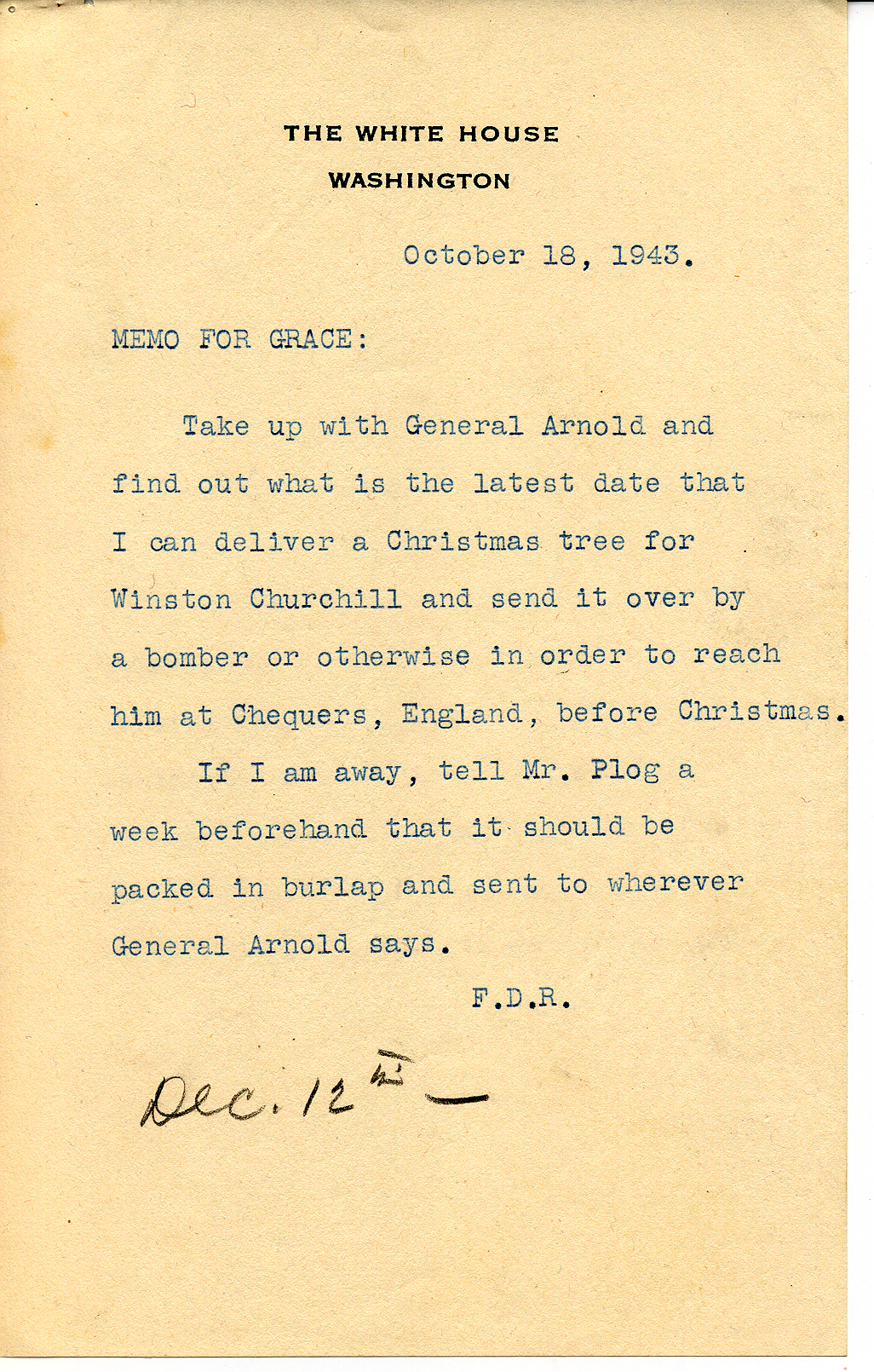
A memo from FDR to his secretary, Grace Tully, regarding Winston Churchill's Christmas Tree
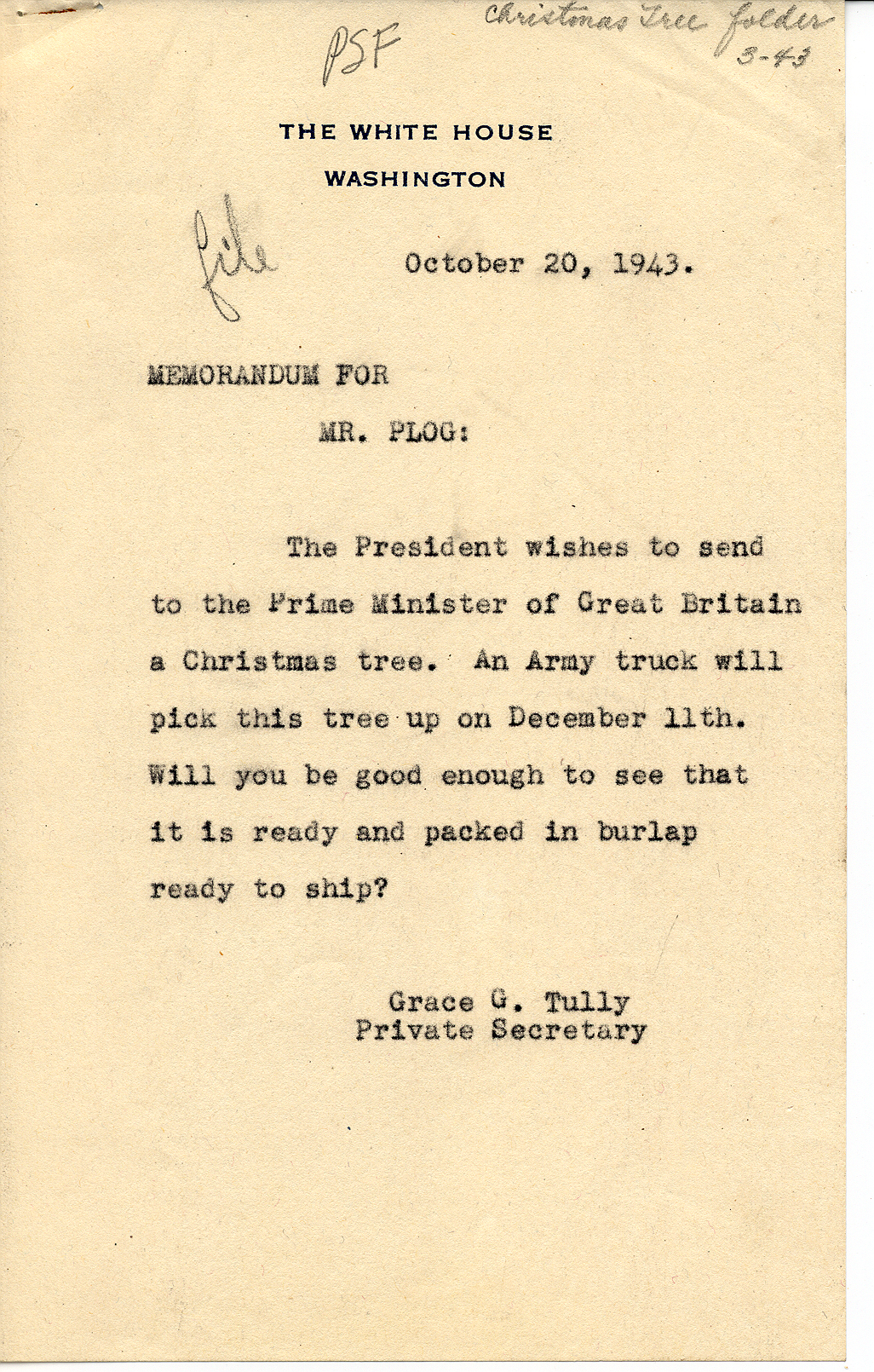
A memo from FDR's secretary, Grace Tully, to estate manager William Plog, regarding Winston Churchill's Christmas tree
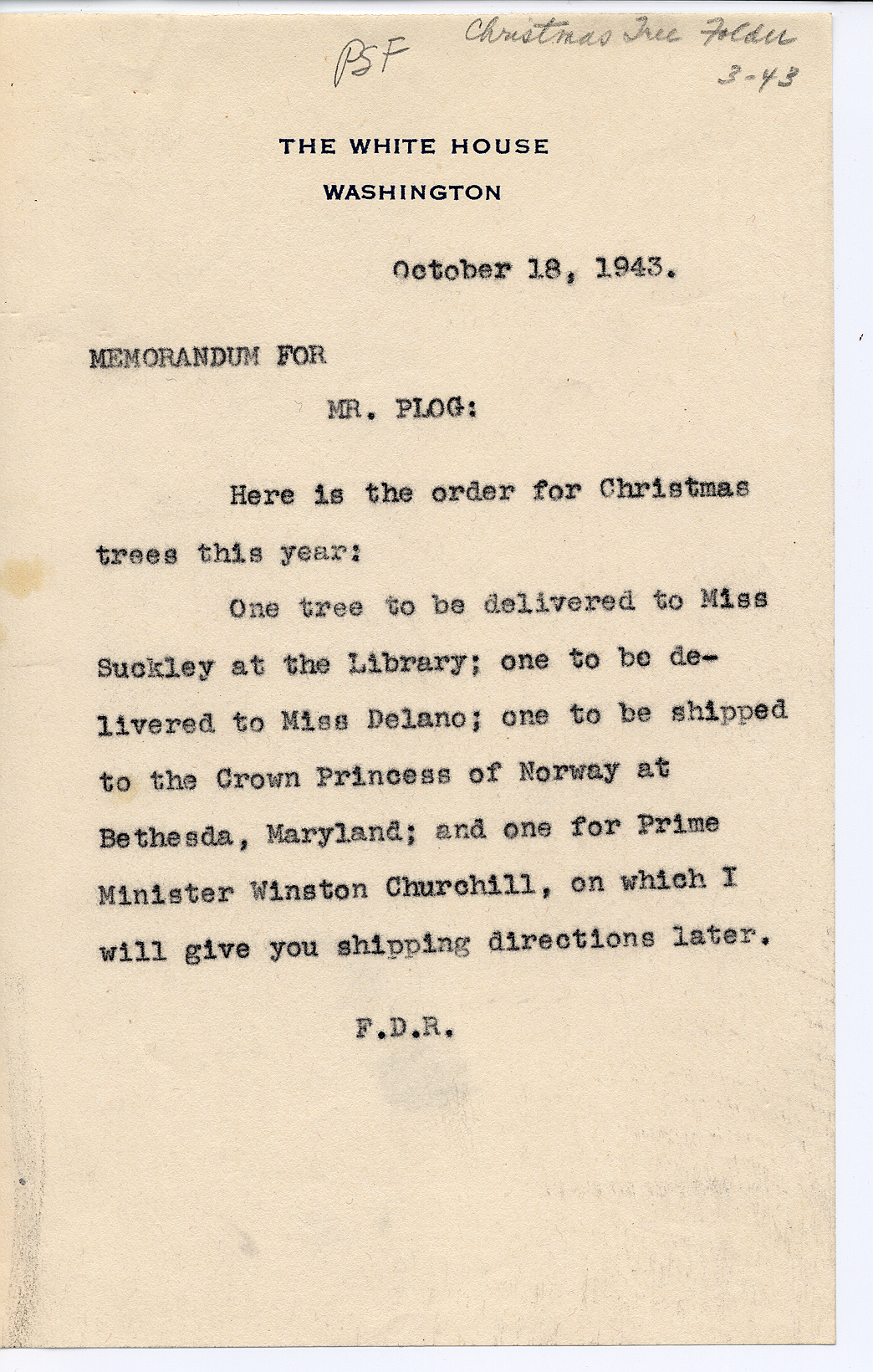
A memo from FDR to estate manager, William Plog, regarding Christmas tree gifts for 1943
This large number of trees being planted coincided with FDR bringing Nelson Brown to Hyde Park to work on a management plan for FDR’s forest lots. Brown, a professor atthe New York College of Forestry in Syracuse, helped FDR develop a viable product inthe way of timber, as well as expand and improve his forest. The plantations were a learning laboratory for FDR and provided others with data. Some of his plantations were strictly used as experimental and demonstration plantations.
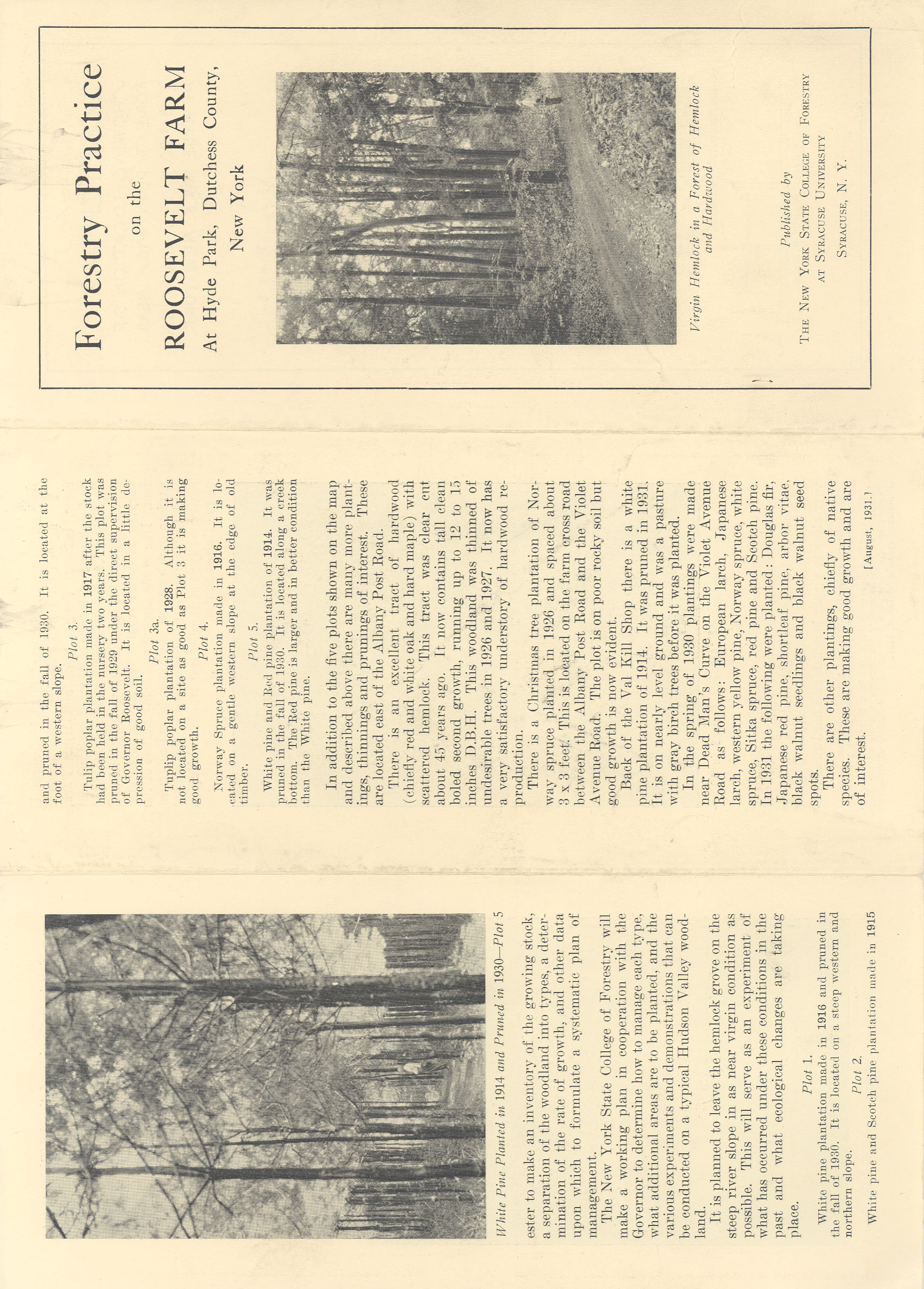 Pamphlet produced by the New York State College of Forestry
Pamphlet produced by the New York State College of Forestry 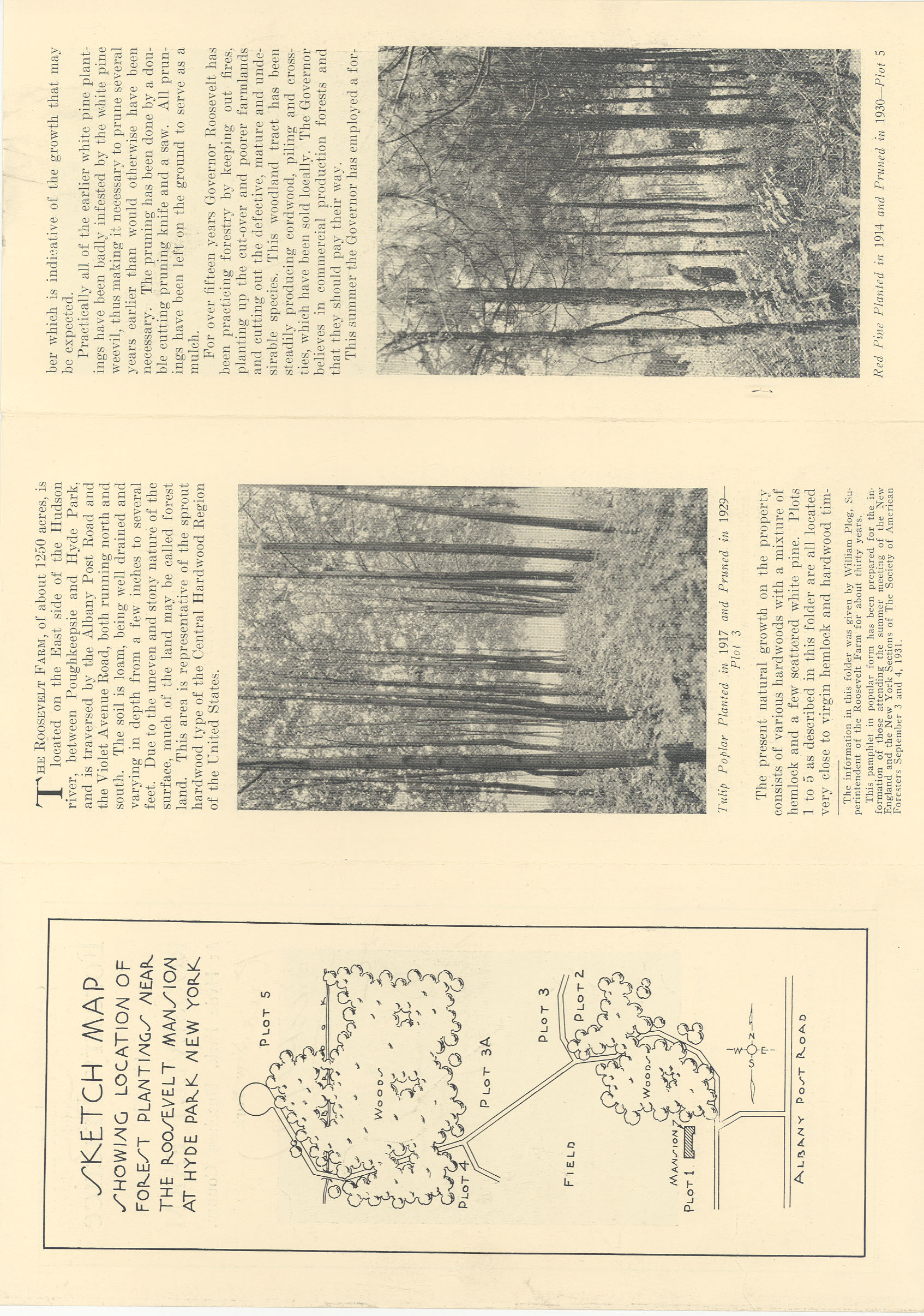
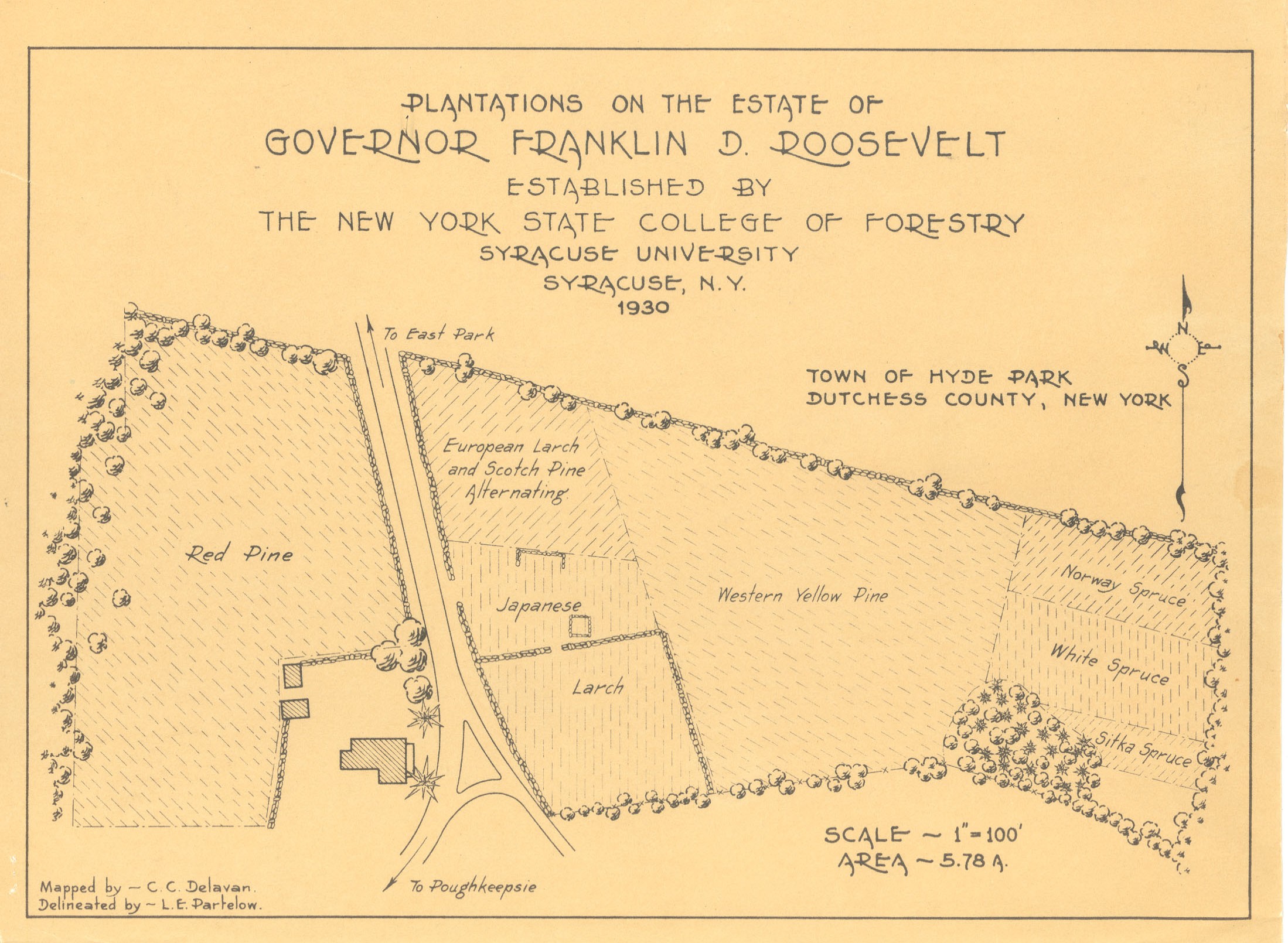 A map of Roosevelt tree plantations by the New York State College of Forestry
A map of Roosevelt tree plantations by the New York State College of ForestryHis passion for trees proved very therapeutic for FDR, especially during the White House years. Nelson Brown said that whenever FDR was in Hyde Park, he would go out driving 2 times a day. Brown said “we would often drive alone for one to three hours or more; resting in a shady glade for 20 minutes or more to informally talk things over. Or sometimes we would just sit and rest”.
His car became his connection to the trees. He could no longer walk or ride horse back in the woods, but with his hand-controlled Ford his property was accessible. He had a crew build a new road through his property and improve the old ones so that he could navigate the forest. In all there were close to 20 miles of roads scattered around the property. Most were crude, single tracks cut through the forest, some with sharp turns on steep grades with stretches that would wash out with heavy rains.
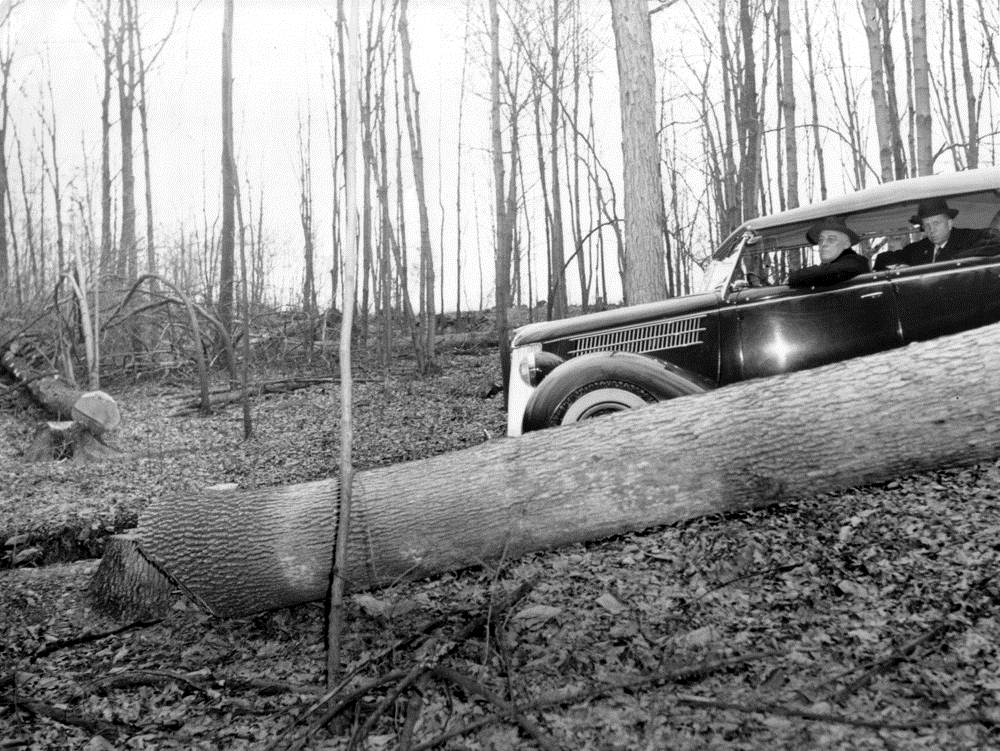
FDR Surveys a Fallen Tree
FDR sold logs from his property for railroad crossties and worked with Central Hudson to provide his own hemlock poles to bring electricity to Top Cottage saving him $7.00 a pole! Even the President had a budget.
In 1939, with the outbreak of WWII in Europe, FDR sold red and white oak from his forest plots for use in building patrol boats and other craft for the Navy. FDR had always loved the Navy, and this was a way for him to be personally involved in assisting the Nation in its’ preparation for war. Nelson Brown was responsible for recording each aspect of this transaction, from marking the trees, cutting them down, skidding, tracking, and milling the logs. FDR profited from the sale of these trees, but the payoff was much bigger for him.
Of course, FDR’s conservation and passion for trees was not just limited to Hyde Park. The lessons he learned on his plantations would play into state and national programs.The Civilian Conservation Corps, affectionately known as “Roosevelt’s Tree Army”, lasted close to 10 years and employed more than 2.5 million young men. They worked in National Parks, building roads and other infrastructure, but also reforested areas that were devastated by forest fires. In 1933, just after President Roosevelt took office, “A National Plan for American Forestry” was prepared by the U.S. Forest Service. FDR greatly expanded the National Forest System as well. He was able to convey the importance of forests to the national welfare of the American people. Farmers in the Midwest saw this firsthand after having dealt with the dust bowls. Not only was it important to rotate crops, but also to plant trees to hold valuable soil in place.
On April 12th, 1945, Franklin Delano Roosevelt died and soon thereafter most of the estate was turned over to trustees under the terms of the will. Nelson Brown proposed that they designate the estate a memorial forest in honor of FDR. Beyond that, there was no other interest in keeping the estate whole and most of the land was sold to developers.The estate of Franklin Roosevelt has seen major transformation over the years. Since the James Roosevelt first purchased land in Hyde Park property has been bought, sold, and re-acquired. Although the complete estate will never be preserved with all the forest plantations FDR left when he died, the National Park Service has partnered with many groups to save much of the historic property.
As a child growing up FDR used the land as a life long “learning laboratory”. He learned about conservation from his father on their daily horseback inspections of the property and from the land itself. And with the nearly 500,000 trees FDR planted he also planted ideas.
“I don’t suppose there is anybody in the world who loves trees as much as I do.”
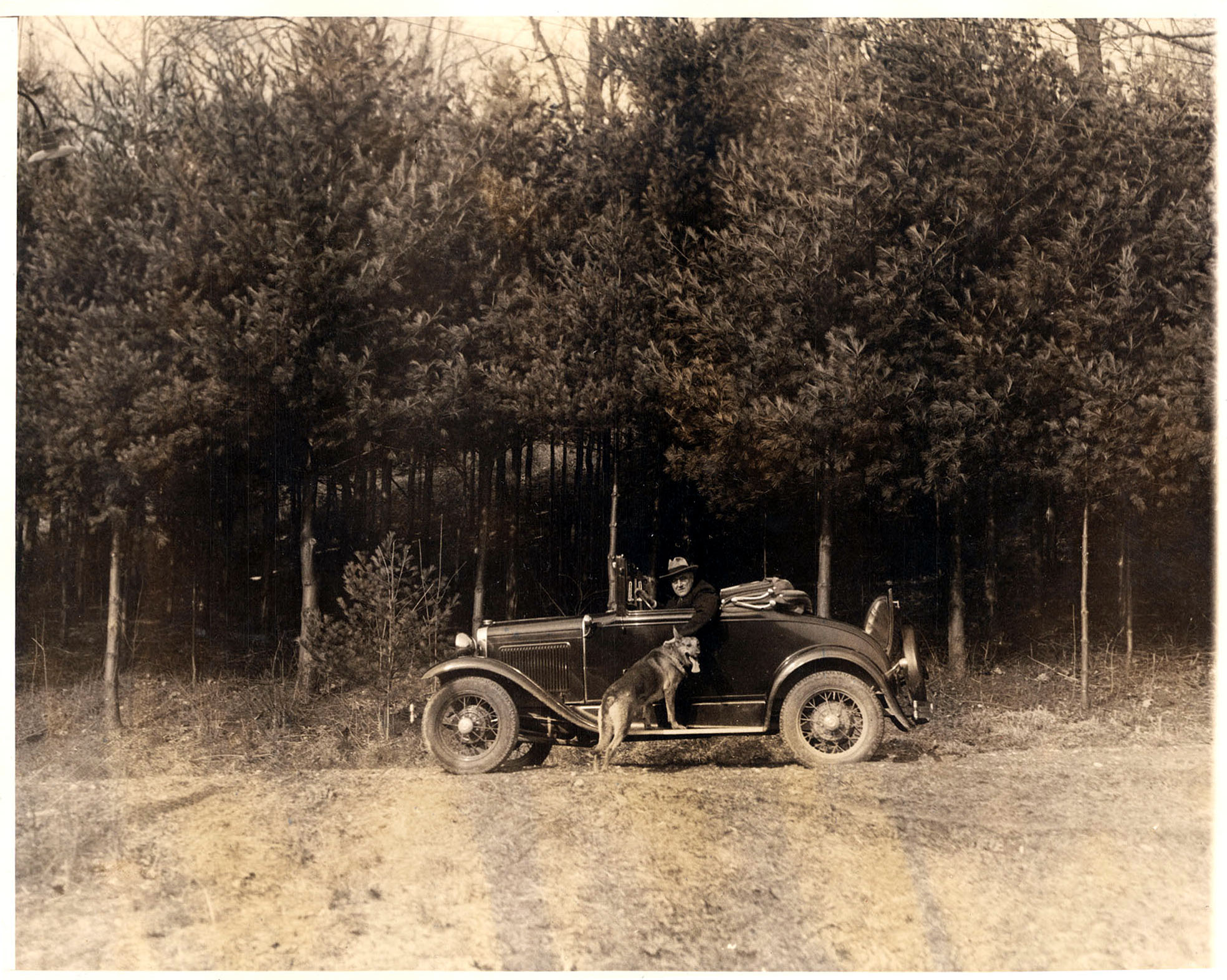 FDR in the woods
FDR in the woods